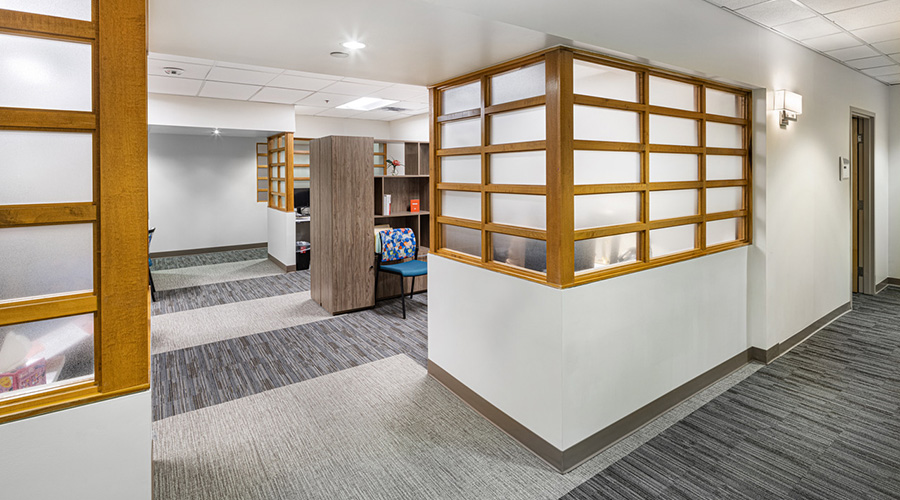Those at the American Architectural Manufacturers Association (AAMA) 2016 Annual Conference heard from an authority on glass safety in the workplace as part of the association’s efforts to promote plant safety awareness. Last year, AAMA created the Manufacturing Safety Forum as a venue for those in the industry to compare and share best practices and safety tips, and speaker Mike Burk (GED Integrated Solutions) used this forum to distribute information specific to glass safety.
Burk has been running the Insulating Glass Manufacturers Alliance (IGMA) Glass Safety Awareness Council since 2011. The council seeks to create and promote awareness of safety issues facing the insulating glass industry. The council documents incidents when someone in the industry gets hurt and reviews media and Occupational Safety and Health Administration (OSHA) reports.
“Our reports are anonymous, so no names or company names are used,” said Burk. “We then give that information to others, so they can prevent the same kind of thing happening again.”
According to the Bureau of Labor, there were 2 percent more deaths in the workplace than in 2013. The year 2014 was the highest count since 2011.
“About 40 percent of fatal industries in the workplace are transportation related, but 11 percent are equipment or manufacturing related,” said Burk.
In 2013 in Canada, by far, the most workplace-related fatalities were in manufacturing, he went on to say.
Burk’s advice to companies is to report near-misses in the workplace too, rather than try to hide them, in order to prevent similar incidents. He also said to shut down the use of short cuts, which are commonly used in order to meet quotas and production goals, but that practice can be unsafe.
“You'll find workarounds to save time in every plant you go to,” said Burk. “Find out what's wrong, fix it, and take those short cuts away.”
He brought to mind a frequent phrase used in the airline industry, which asks patrons to stay seated “for the safety of you and those around you.”
“It's not just you,” said Burk. “It's other people at risk, too.”
Burk added that stressing personal protective equipment is important to consider and that manufacturers are responsible for sharing safety information with employees. Luckily, outside resources can help, such as the OSHA and Safety and Health Achievement Recognition Program (SHARP).
“Maybe you're afraid to invite them in, but if something happens or if someone complains, they'll be there anyway,” said Burk.
When it comes to drug and alcohol policies, Burk says it’s important to look at testing policies and define "under the influence."
“You need to have some rules,” Burk said, adding that many states with workers compensation programs won't pay if drugs or alcohol are involved in an accident.
Burk suggested companies offer training webinars and use media resources and outlets to get information and awareness out about safety. Simple workplace videos on loop can serve as regular reminders.
Burk offered an alternate acronym for the letters IGMA: ‘I’ for Instruction; ‘G’ for Gear; ‘M’ for Move; and ‘A’ for Attitude. Move is very crucial, said Burk, stressing the importance of moving away from, as opposed to attempting to catch, a falling item.
Most importantly, Burk advised attendees to keep these tips in the minds of employees.
“Do a lot of reminding,” advised Burk. “At every meeting, and every time you get together, drive it home.”
Burk also spoke to AAMA Western Region Winter Summit participants on Feb. 18 as part of that event’s focus on safety.
More information about AAMA and its activities can be found at http://www.aamanet.org/.

 Joint Commission Standards: What Updates Matter Most?
Joint Commission Standards: What Updates Matter Most? Swinerton Completes Construction at Atlanta's Grady Hospital
Swinerton Completes Construction at Atlanta's Grady Hospital NY Governor Hochul Announces $300M in Funds for IT and Cybersecurity
NY Governor Hochul Announces $300M in Funds for IT and Cybersecurity Healthcare Is the New Retail
Healthcare Is the New Retail Bridgeway Behavioral Health Services Launches Campaign to Renovate Health Center
Bridgeway Behavioral Health Services Launches Campaign to Renovate Health Center